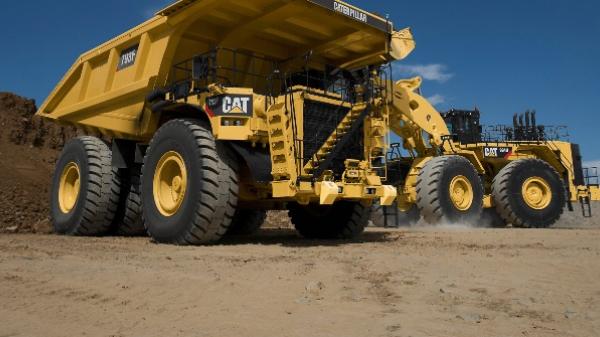Will we one day see 100% autonomous machines?
- maquinaria

06 February, 2023
It's hard to ignore the increasing attention autonomous construction machines are receiving. Just last year, SafeAI and Obayashi Corporation showed an autonomous Cat® 725 articulated truck, Shantui developed an unmanned bulldozer, SRI International released a video on its robotic excavator prototype, Autonomous Solutions, Inc. (ASI) partnered with Epiroc Drilling Solutions on its Mobius autonomy platform for drills, and Trimble introduced its new automatic steering control for soil compactors. Will we ever get to the point where humans are no longer needed in a workplace?
The autonomous transition will follow the footsteps of the automotive industry
All industries, including construction, have benefited from US defense research, says Bibhrajit Halder, founder and CEO of SafeAI. This included the DARPA (or Defense Advanced Research Projects Agency) Grand Challenge in the early 2000s, designed to accelerate autonomous vehicle technologies. "That was a trigger point," says Halder, whose company focuses on providing autonomous solutions to construction and mining. "It was a massive success that really sparked autonomy in this country." In 2014, the Society of Automotive Engineers established six levels of autonomy, ranging from Level 0, which indicates vehicles with fully manual controls, to Level 5, in which there is no human interaction in the operation of a vehicle. "No one has a true Tier 5 system yet," says William Nassauer, strategy product manager for Komatsu America's autonomous systems and mining technology solutions. That assessment, of course, includes the automotive sector which, while leading the autonomous journey, has had significant bumps along the way. As with cars, construction crews will transition from assist functions to task automation and task autonomy. Now common operator aids, such as blade and bucket controls, require basic sensors that are steps through the automation process. But equipment automation must be considered in the context of the full autonomy of the job site, with multiple autonomous machines working together, says Fred Rio, product manager for digital construction and technology at Caterpillar. "On a job site," Rio continues, "all the machines have a shared mission, and no machine can achieve it without the other machines. The real quantum leap in value will be when you can get them all working together."
The adaptation of current machines to work without an operator
Several companies, including ASI, Built Robotics, SafeAI, and Teleo, are building upgrade kits that eliminate the need for an operator in the cabin. ASI defines three different types of operator controls outside of the cab: remote control, where the operator is in the line of sight of the machine they are controlling; teleoperation or non-line-of-sight operation that is still an operator operating a machine; and autonomy, in which an operator can remotely monitor the operation of an entire fleet of machines. Teleo's supervised autonomy modernization is designed specifically to include carriers, according to co-founder and CEO Vinay Shet. "We are combining the best of both worlds: the experience and knowledge that their operators have with technological advances," he says. "This allows their operators to do much more than before." The company, which partnered with Deere dealer RDO Equipment, among others, is now beta testing its system on North American job sites.
Will we get to the point where humans are no longer needed?
Maybe, Halder said, but it's still years away. There will be a turning point. “By the time a contractor completes a $100 million project for $80 million due to autonomy, it's game over,” Halder says. "Everyone has to do it because you can't compete anymore." "The industry is absolutely huge, the pain points are huge and it's early days for autonomy," says Teleo's Shet. "To be honest, there aren't enough companies doing what we're doing." "There is a great appetite and interest for autonomy," agrees Ahmed. "Maybe the construction industry needs to develop its own set of autonomy goals, that are specific to its needs and show that each level is valuable."
